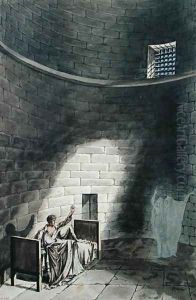Armand de Polignac Paintings
Armand de Polignac was a French artist known for his contributions to painting and sculpture in the early 20th century. Born into the illustrious Polignac family, which had a long history of involvement in French politics, art, and society, Armand chose to focus his energies on the artistic rather than the political realm. His birth in 1879 came at a time when France was experiencing rapid changes in its social, political, and artistic landscapes, changes that would deeply influence his work and career. De Polignac's artistic journey began in the academies of Paris, where he was trained in the traditional techniques of painting and sculpture. However, like many of his contemporaries, he was soon drawn to the avant-garde movements that were emerging at the turn of the century. His work began to reflect the influence of Impressionism and later, elements of Cubism. Despite his noble lineage, Armand de Polignac sought to make a name for himself based on his artistic talents rather than his family name. He exhibited his work at various salons and galleries, gradually gaining recognition among the Parisian art community. Throughout his career, de Polignac remained committed to exploring new artistic expressions and techniques. His willingness to experiment and adapt was evident in the evolution of his style over the decades. By the time of his death in 1962, he had left behind a diverse body of work that reflected both the traditional roots of his early training and the innovative spirit of his later years. De Polignac's legacy, though perhaps not as widely recognized as that of some of his contemporaries, remains an important part of the narrative of French art in the 20th century.





